Mud Pond
A peaceful paddling and birding destination
Mud Pond, with a boreal bog mat bordering much of its western shoreline, is a scenic place to paddle. I count it as one of my favorite canoeing locations since it became accessible to the public over a decade ago. An agreement between the Cedarlands Boy Scout Reservation and New York State in 2002 made most of the 5,500 acre parcel publicly available 10 months a year, and Mud Pond and the lands surrounding it accessible year-round.
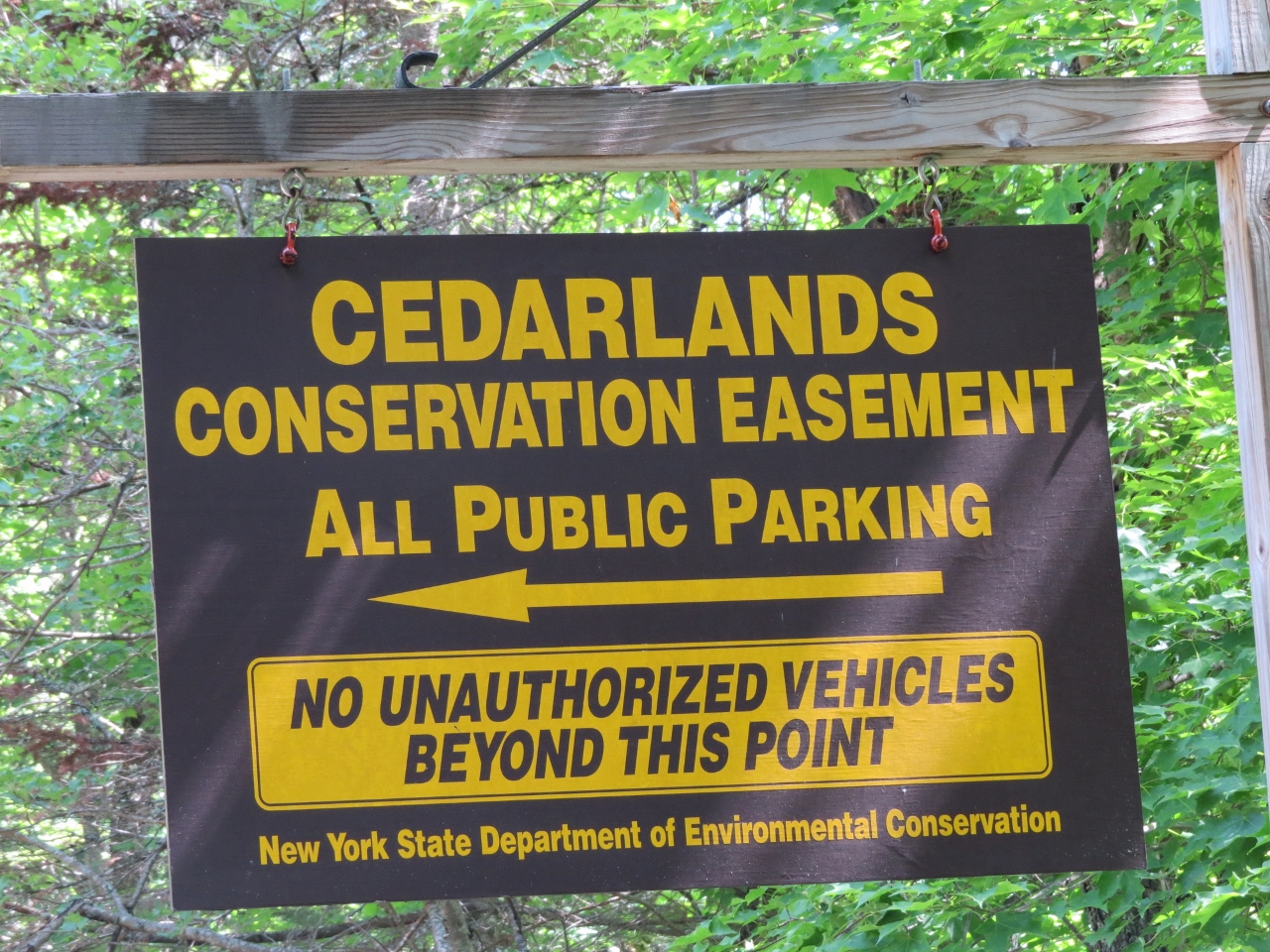
Parking and the carry (and birds along the way)
From the public parking area for Cedarlands in Long Lake, the carry is approximately sixth-tenths of a mile to Mud Pond, so a light-weight canoe or kayak is helpful. If you have a heavier boat, a wheeled cart can be used as the carry is on dirt roads. Eventually, the state plans to put a canoe carry trail through the forest from the parking area to Mud Pond, which will shorten the carry.
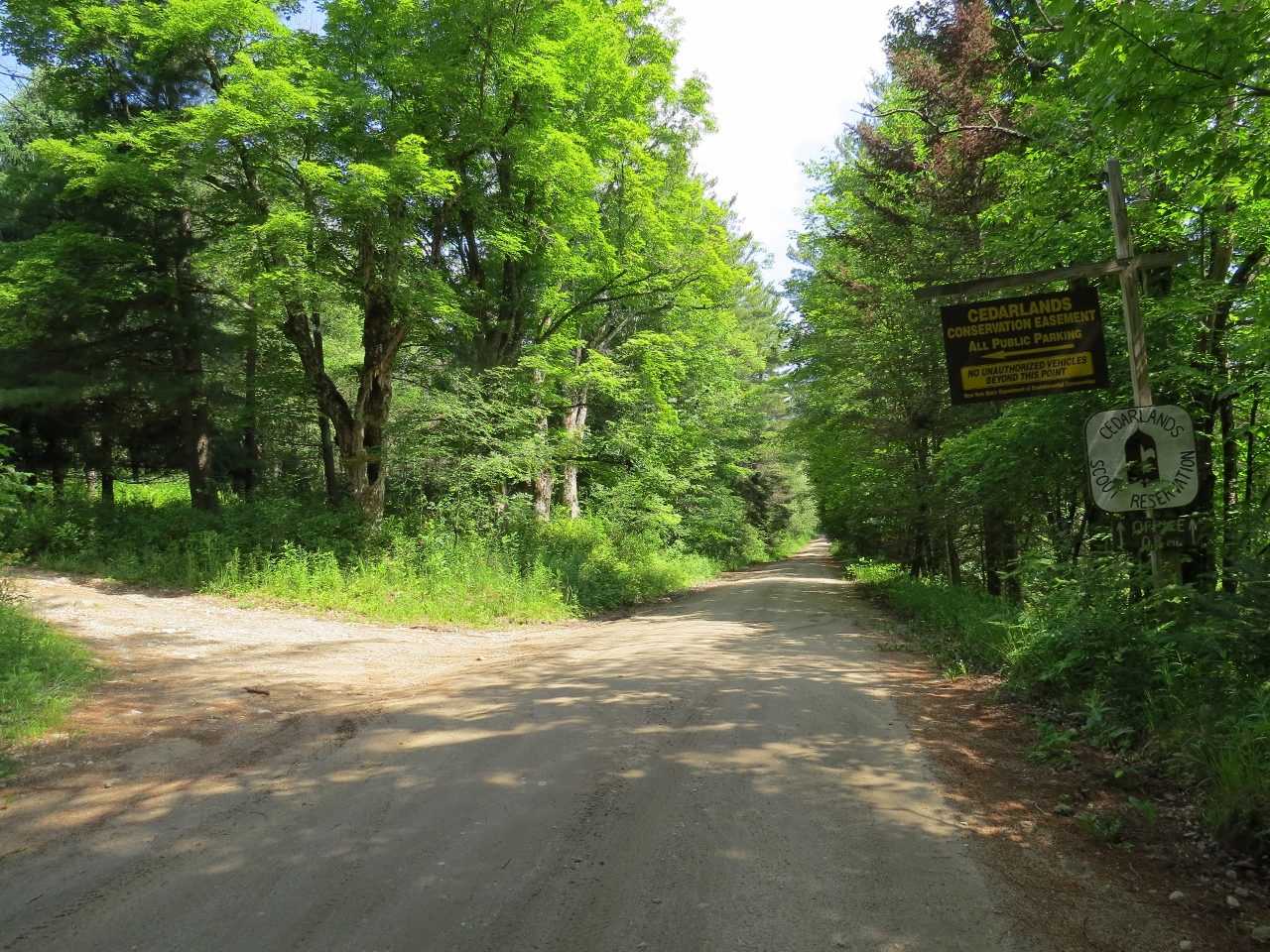
I spent time birding in the open-field parking location before carrying my canoe to Mud Pond. Chestnut-sided and Nashville Warblers sang as did beautiful Indigo Buntings.
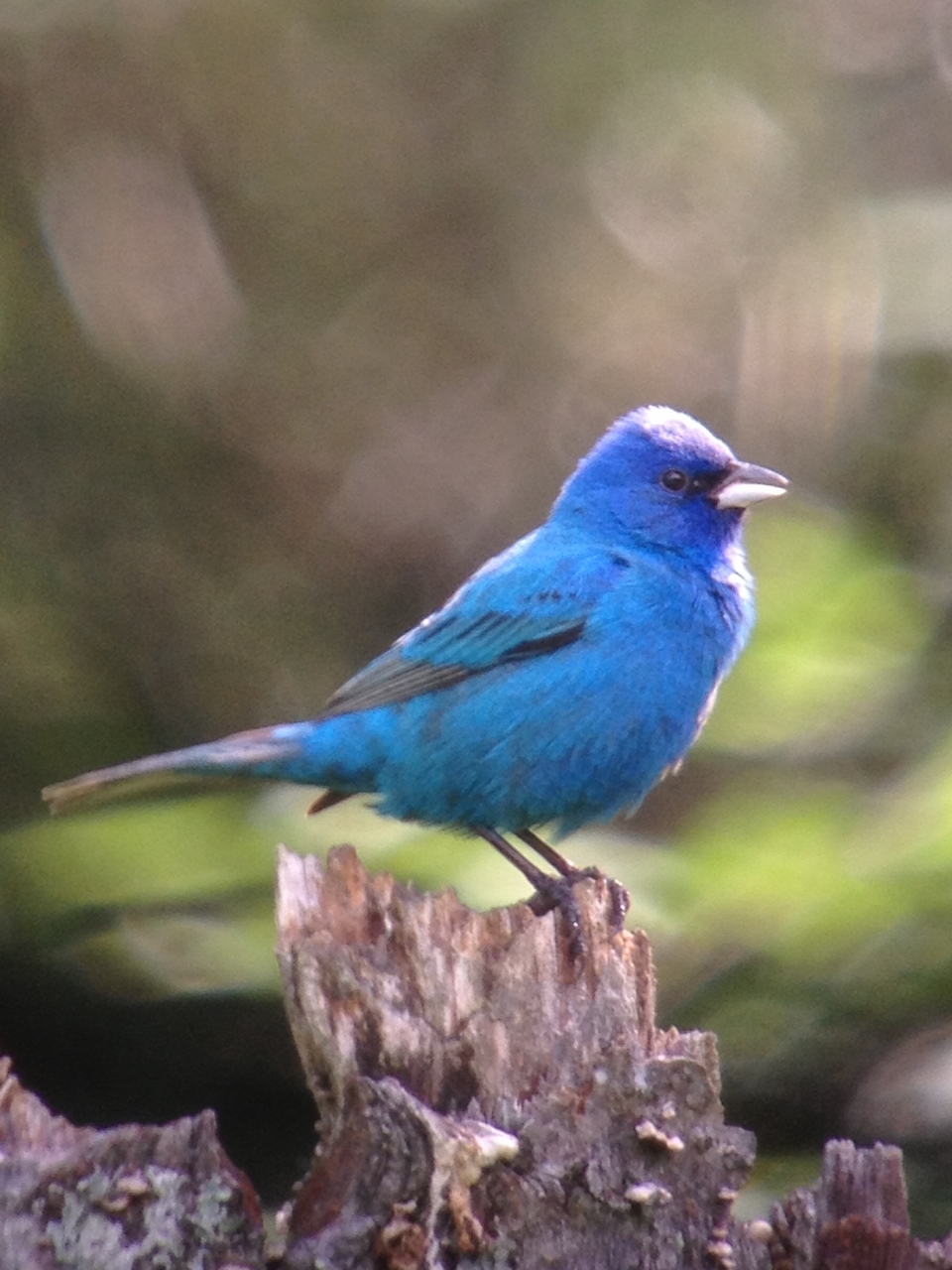
The parking area had overgrown grass, indicating that Cedarlands is not seeing much public use! Surprisingly, a car pulled up with a kayak on top as I was birding. It was a man from Utica associated with the Boy Scouts who planned to fish at Mud Pond. He told me that Cedarlands is not being used much anymore by the Boy Scouts. I did not see any Scout activity during my outing. The entire property is also currently on the market.
From the parking area, a paddler needs to carry their boat for three-tenths of a mile on the dirt road to an area with three gates.
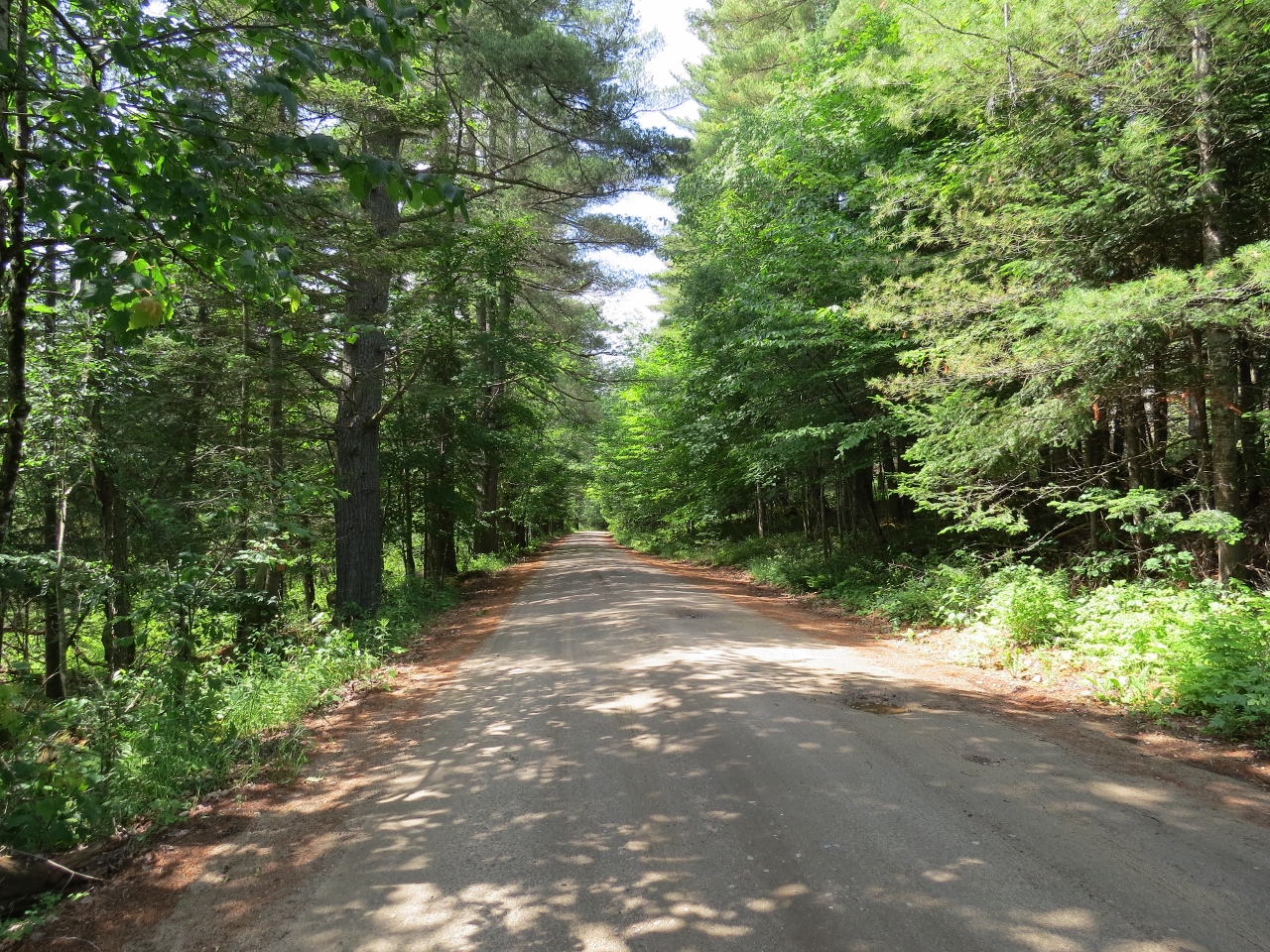
Go around the gate to the left and walk a short distance to Mud Pond. You can bushwhack down to the pond when you see the water, or continue on a short distance to an old dirt drive down to the water's edge.
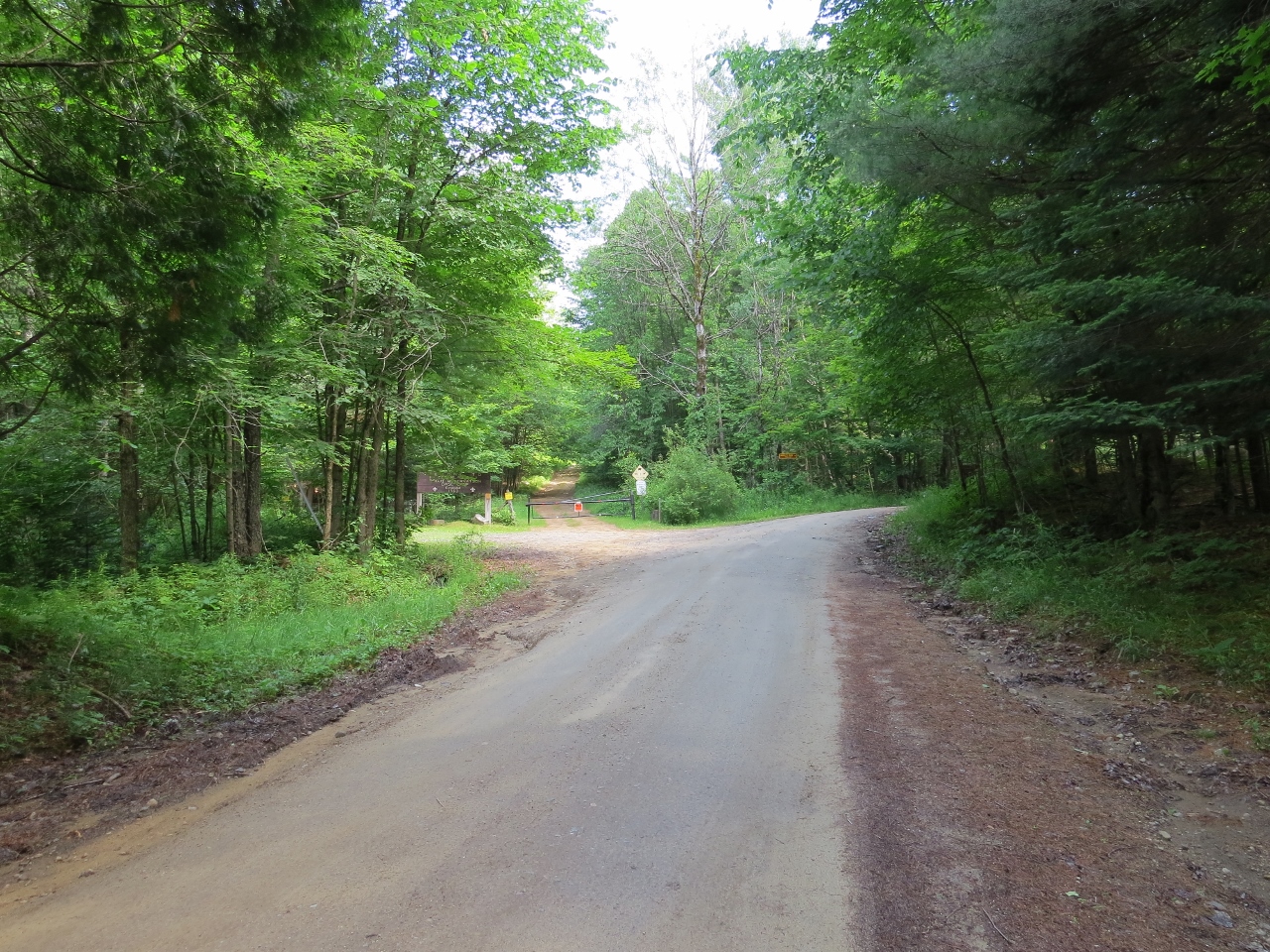
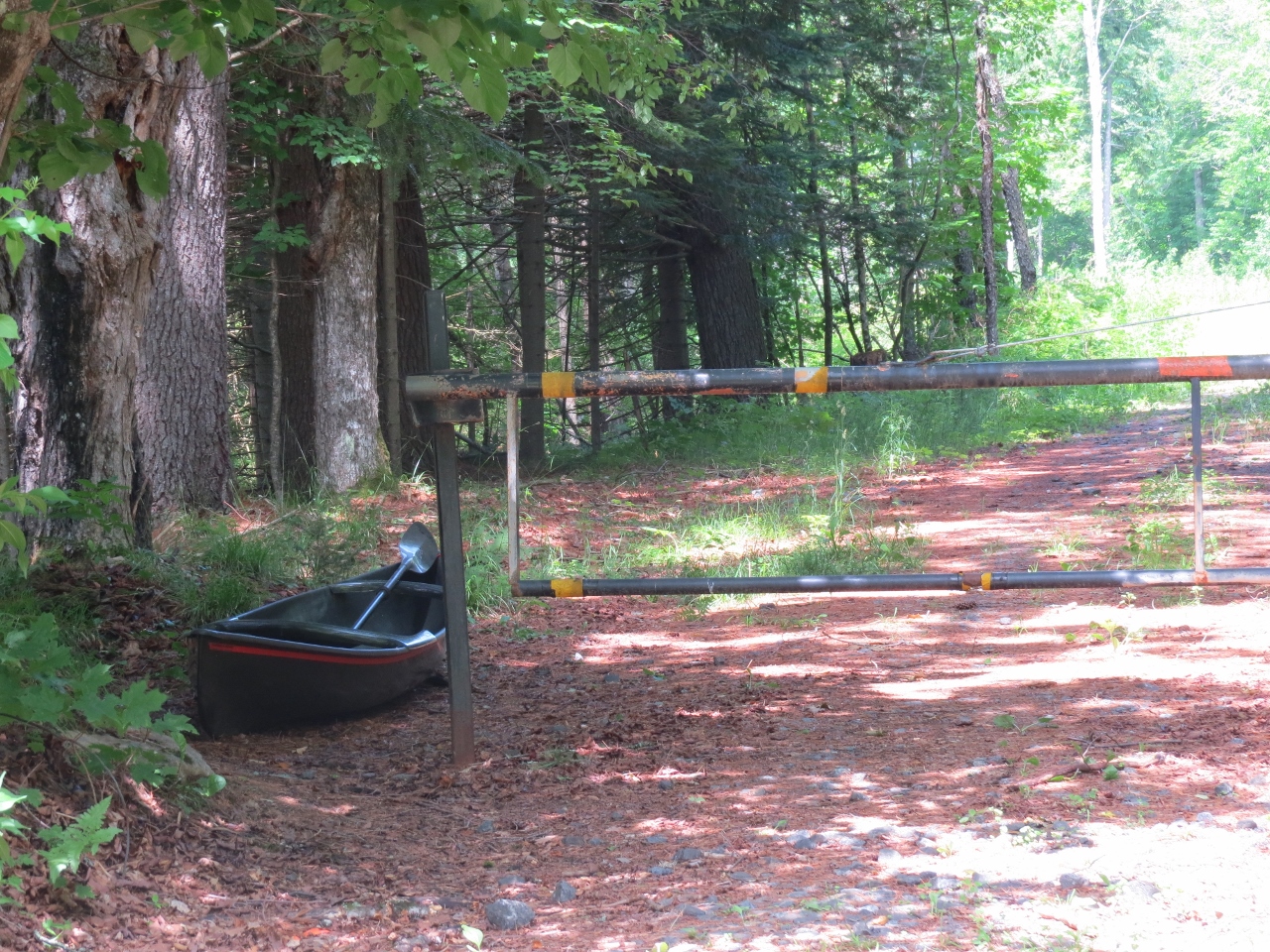
I chose to bushwhack through the forest when I spotted Mud Pond from the dirt road. The man from Utica was already across the pond and fishing when I put my canoe in. It was late morning and a beautiful day. I headed for the inlet at the northwestern corner of the pond, which is an area full of scenic narrow waterways and bog mats. I hoped to hear Olive-sided Flycatchers, which I have on other occasions in this area, but I did not on this day. I did find Yellow-bellied Flycatchers in this boreal area. Cedar Waxwings, Hermit Thrushes, Northern Parulas, Magnolia and Nashville Warblers, and Song and Swamp Sparrows also sang.
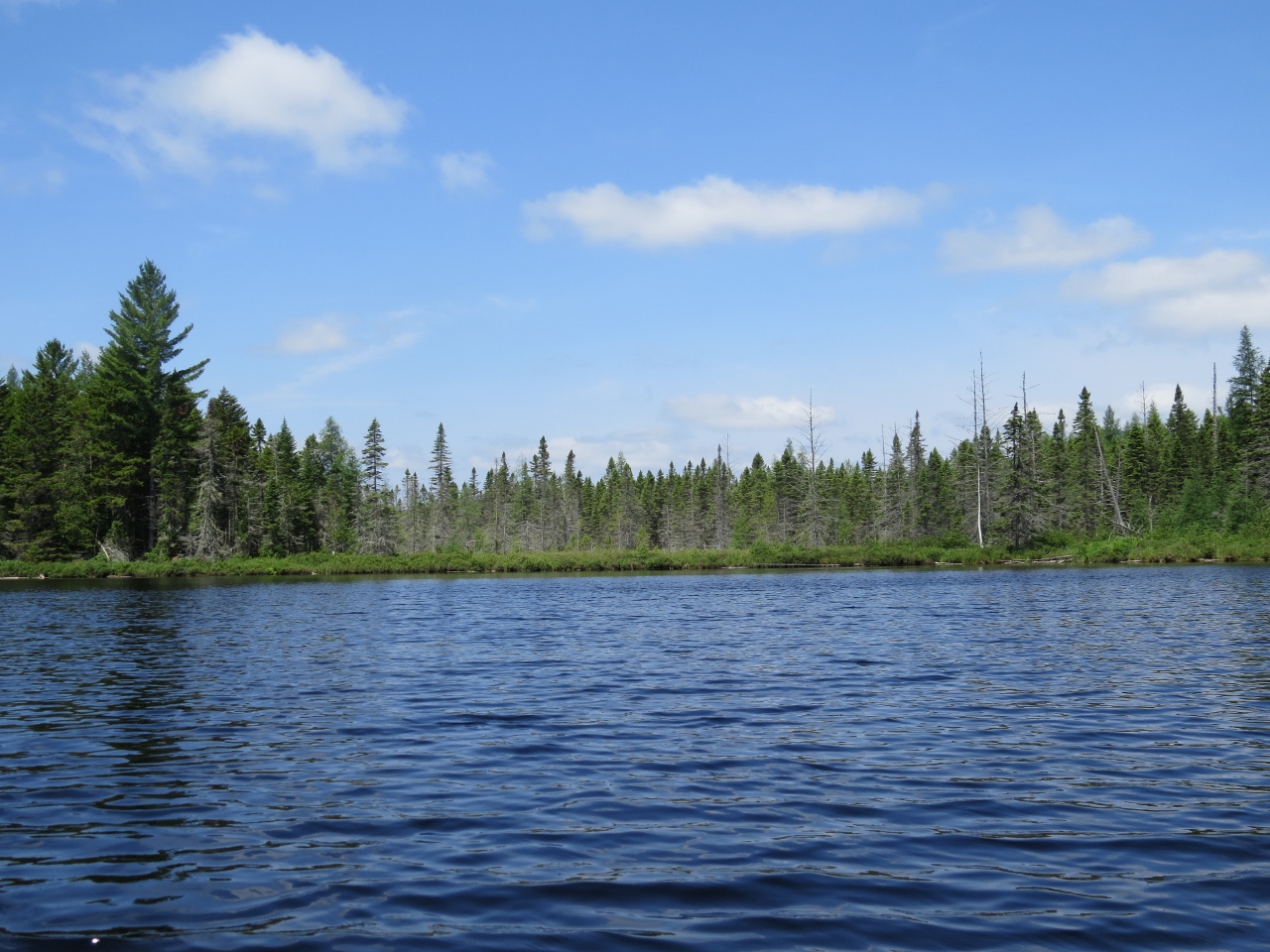
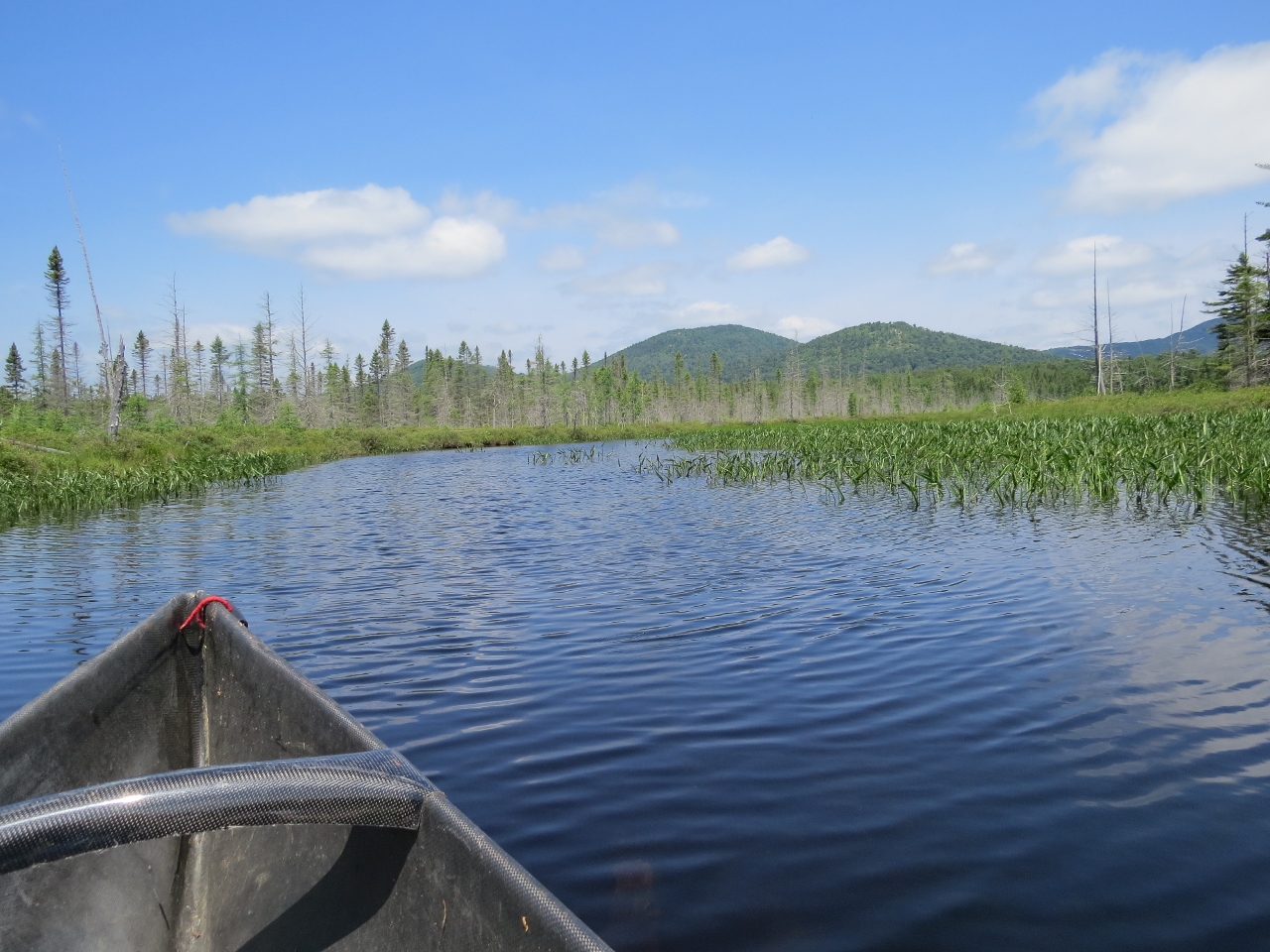
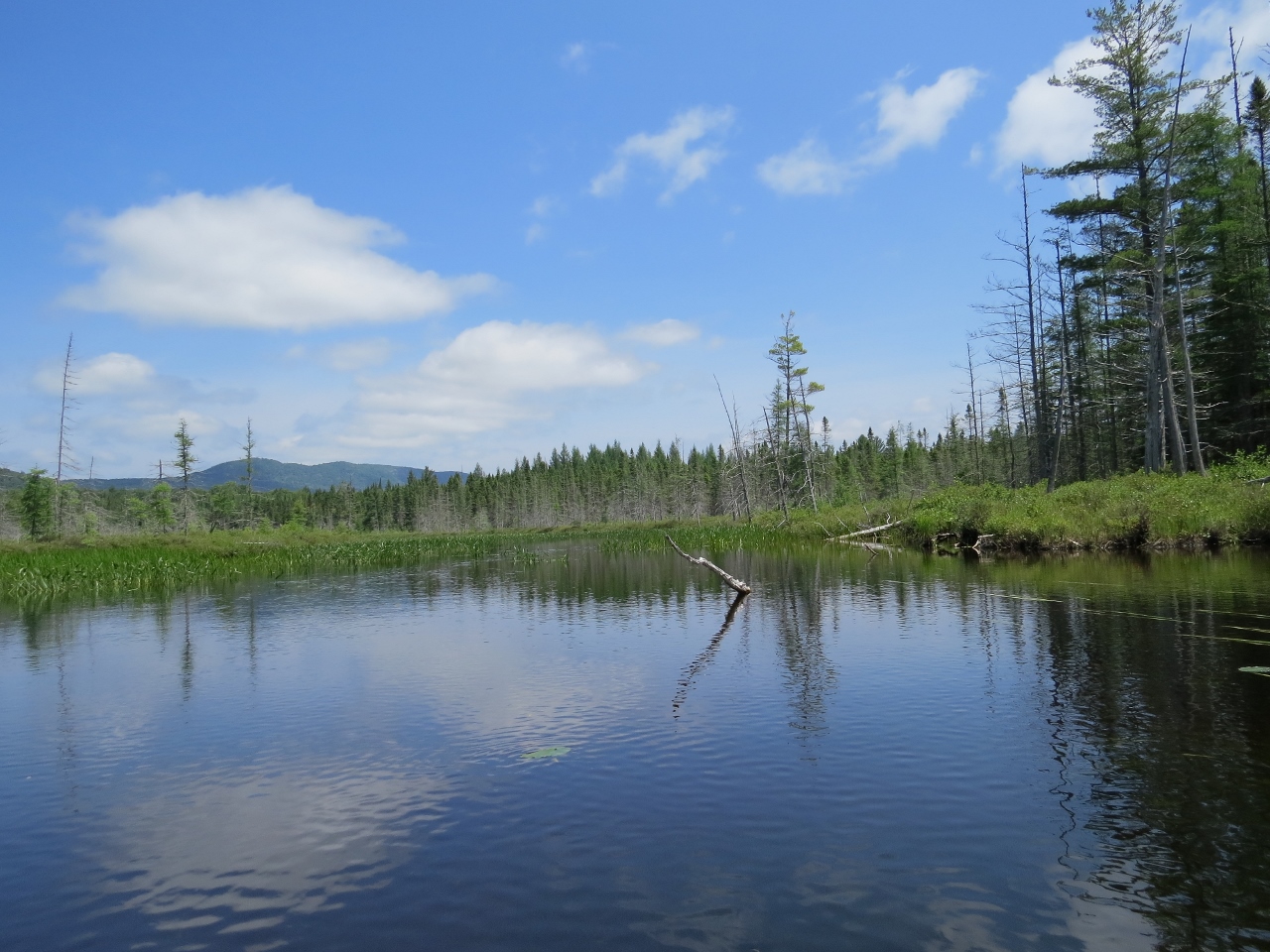
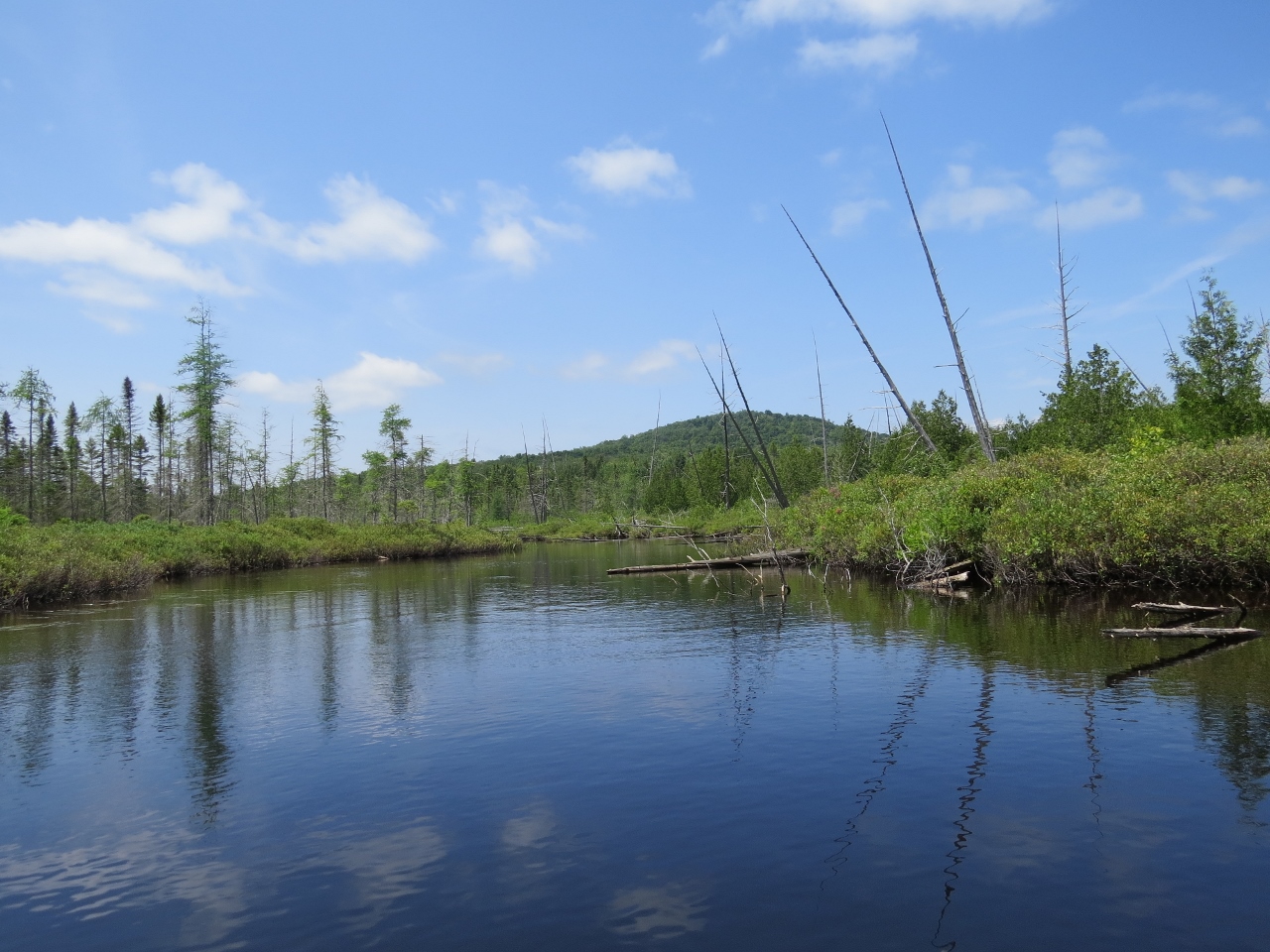
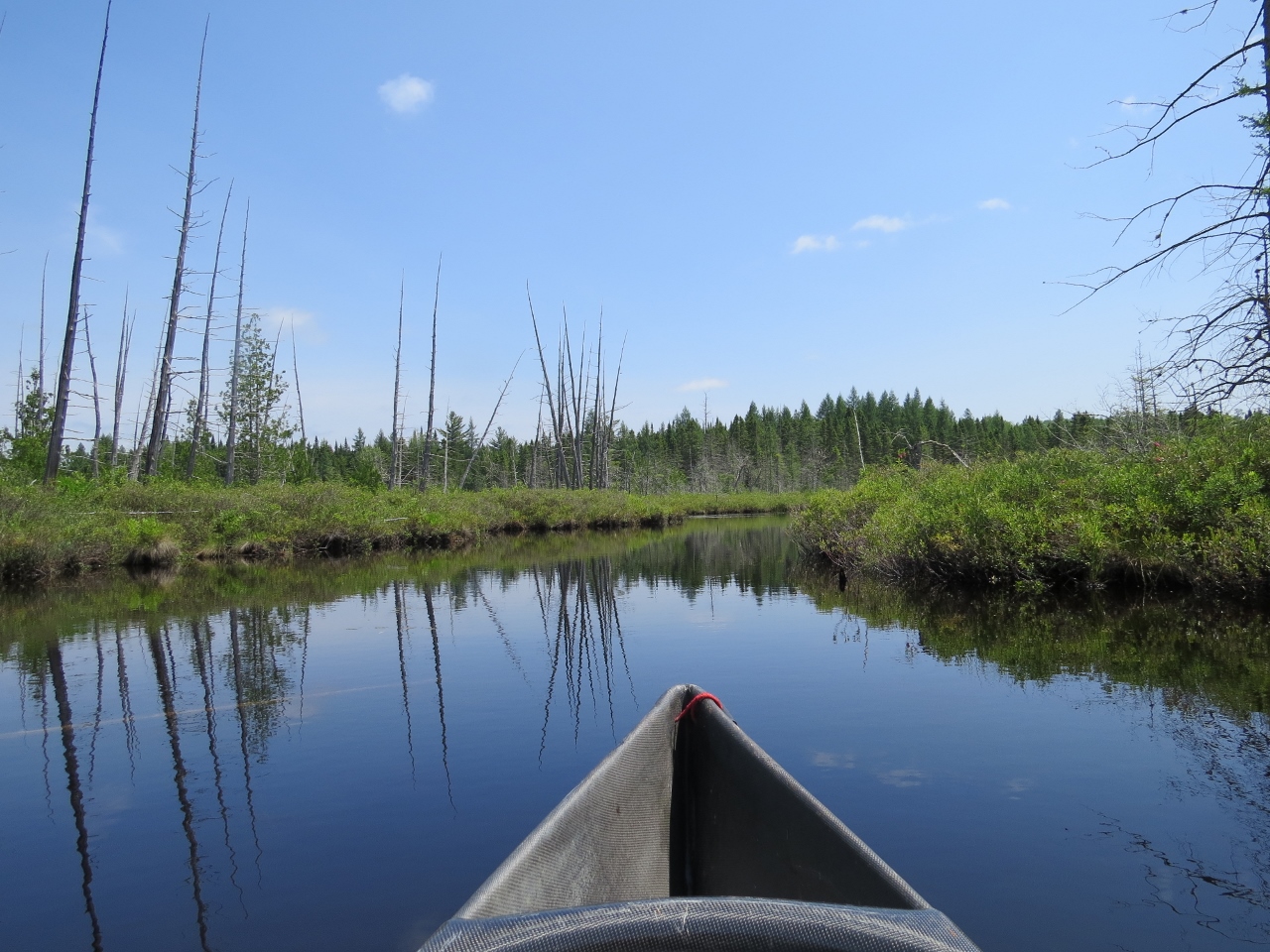
The peaceful, Beautiful Pond
The water was crystal clear and filled with beautiful, green grasses that swished with the inlet current, appearing as long hair flowing back and forth.
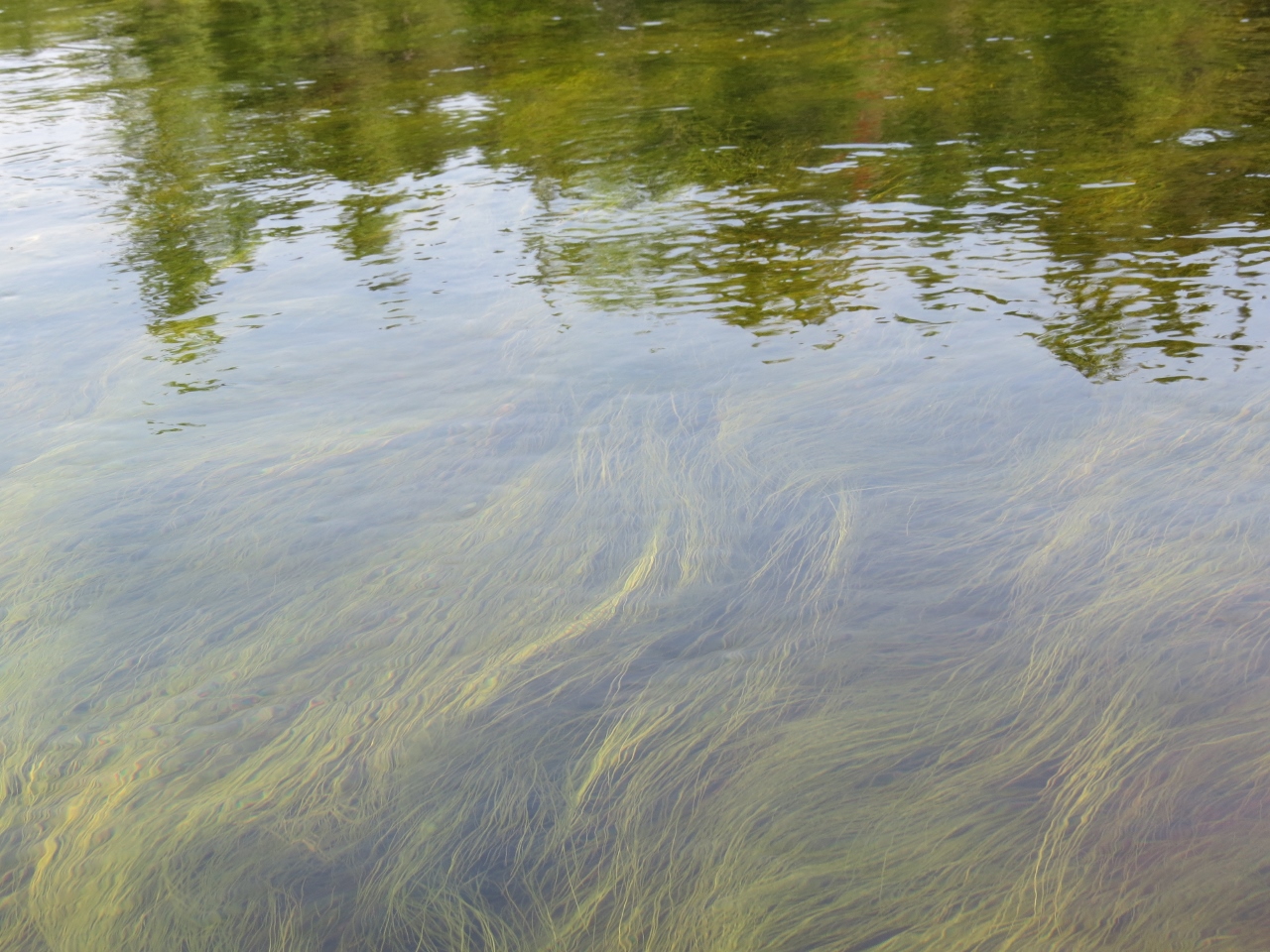
Rose Pogonias were in bloom at the edge of the water mixed in with carnivorous Pitcher Plants. Bog Laurel was past its prime, but still in bloom.
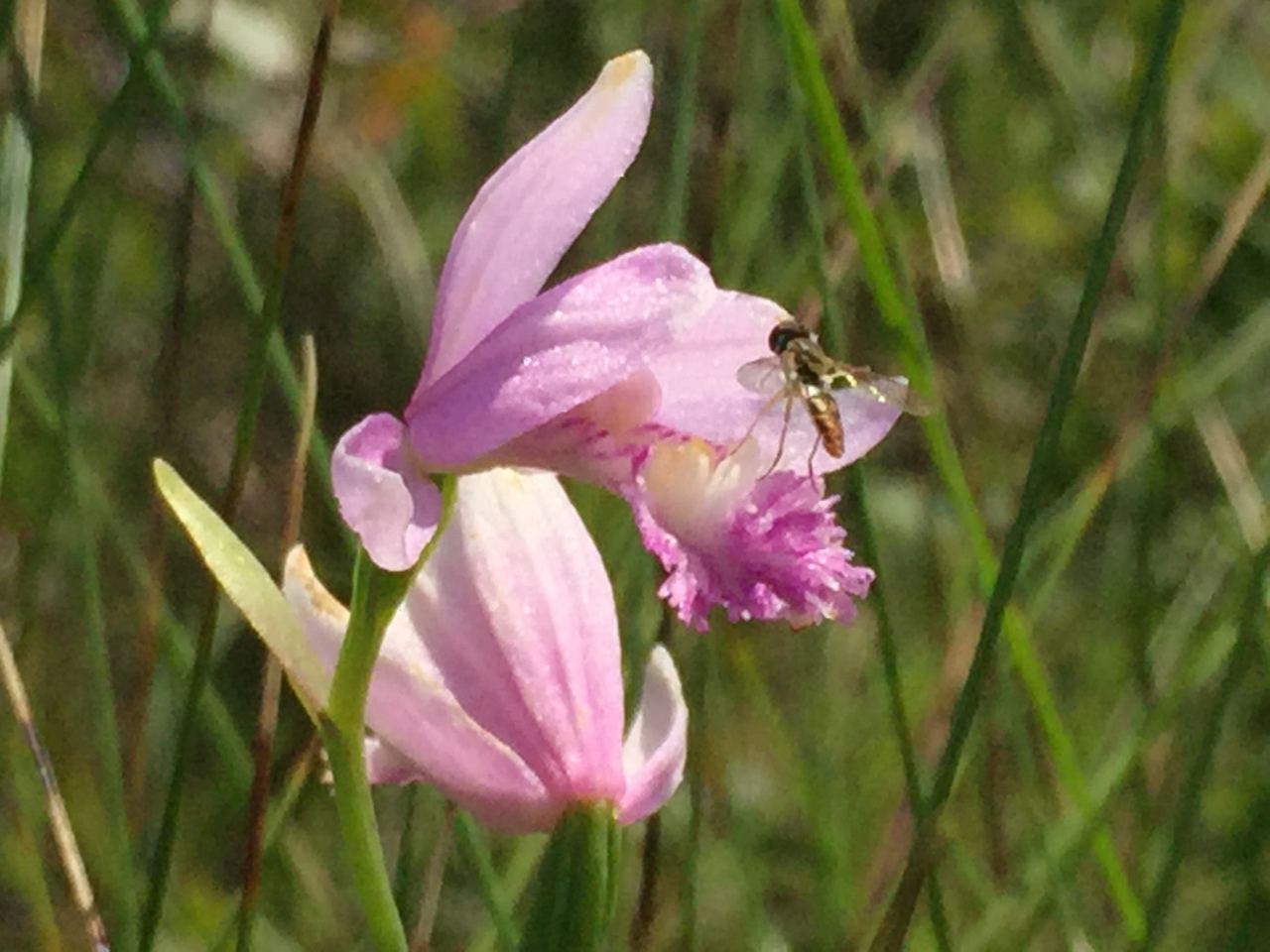
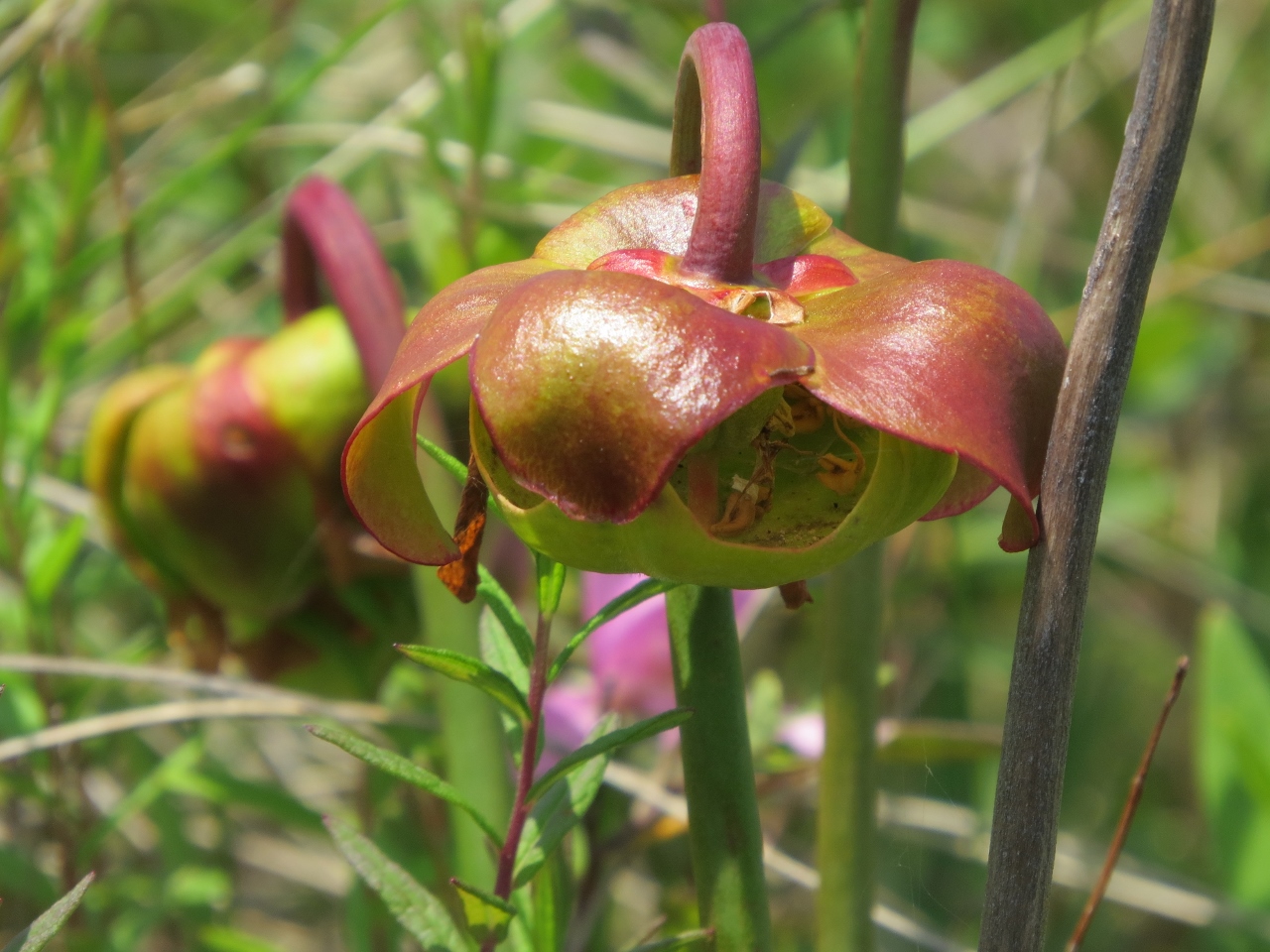
Cedar Waxwings perched above me appearing curious about my presence.
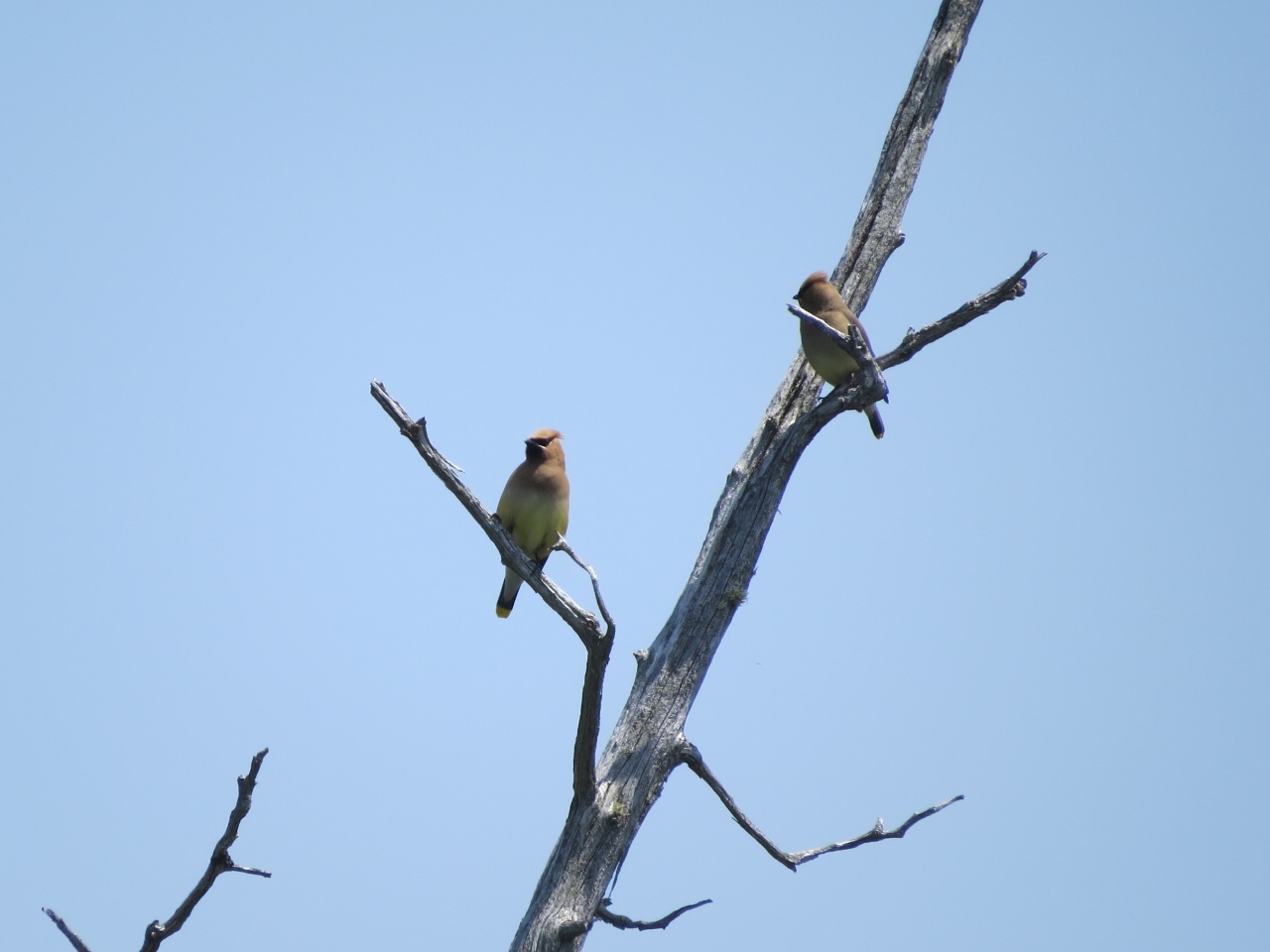
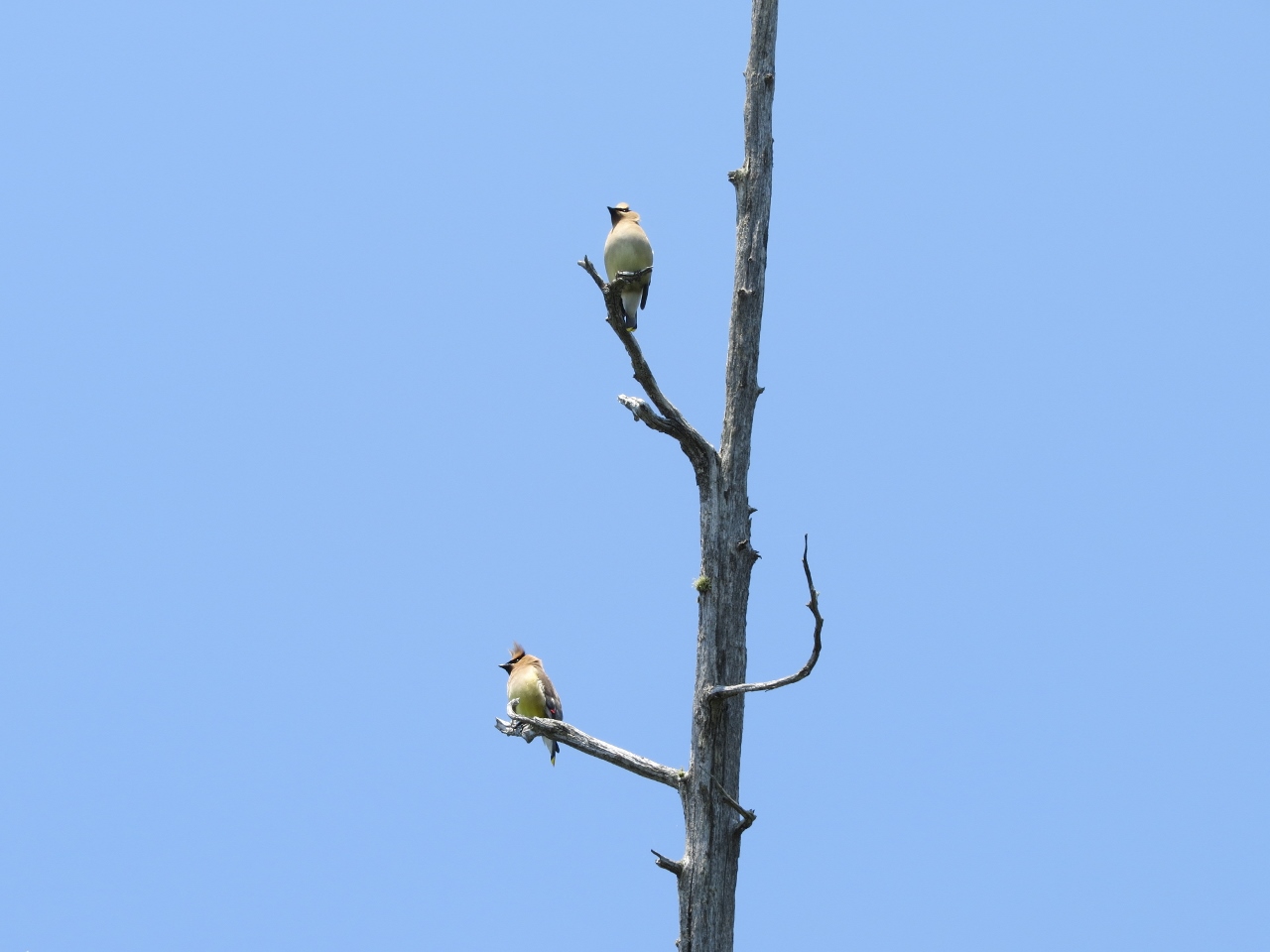
I stopped my canoe in some tall vegetation near the canoe carry to McRorie Lake to have lunch. (The lands around McRorie Lake are open to the public for 10 months a year from August 23 to June 23. Since it is July, only Mud Pond is accessible.)
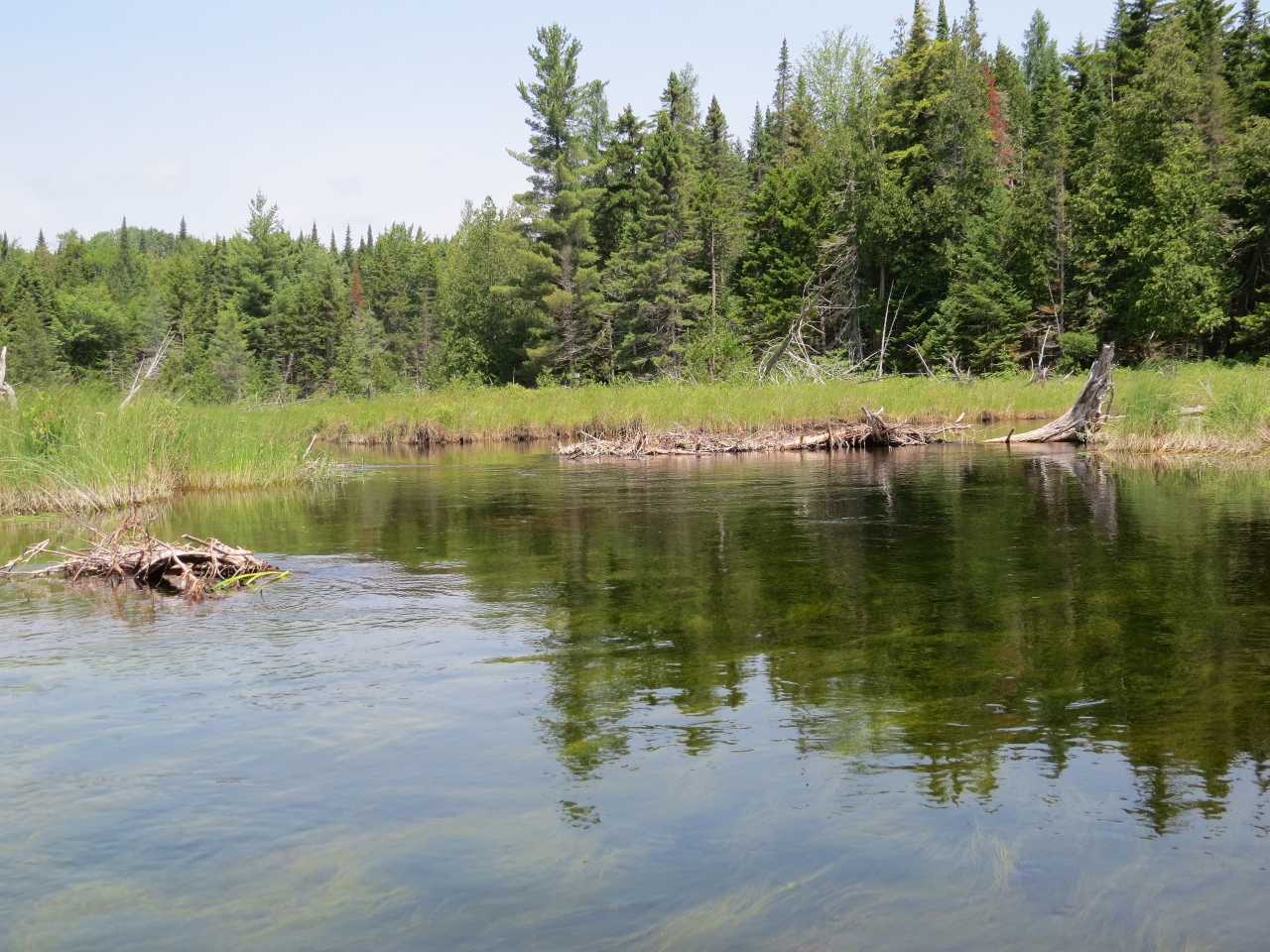
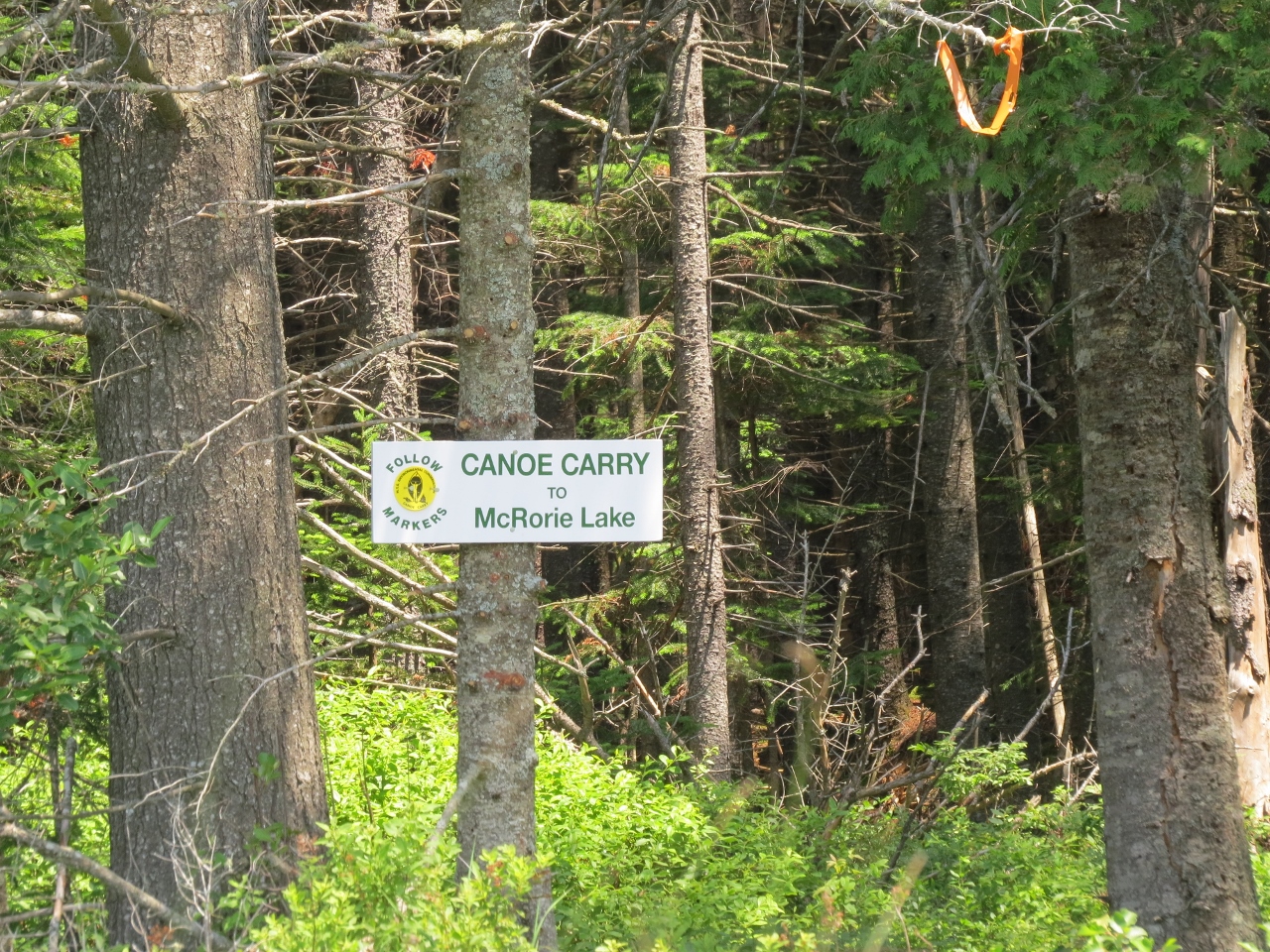
When I grabbed my double-bladed paddle to head back down the inlet, I noticed I had company! The largest spider that I have ever seen was in my boat! It appeared as startled as I was and immediately scampered out of the boat. It fell into the water and remained on top. The current quickly took me away from it. I debated paddling back to photograph the spider, but I feared it might get back in my boat again, so I dropped that idea!
I paddled along the western shore of Mud Pond at the edge of the bog mat. It is lovely to be so close to the bog plants and flowers. There was a beautiful boreal garden made up of Rose Pogonias, Pitcher Plants, Sphagnum Moss, and Bog Rosemary.
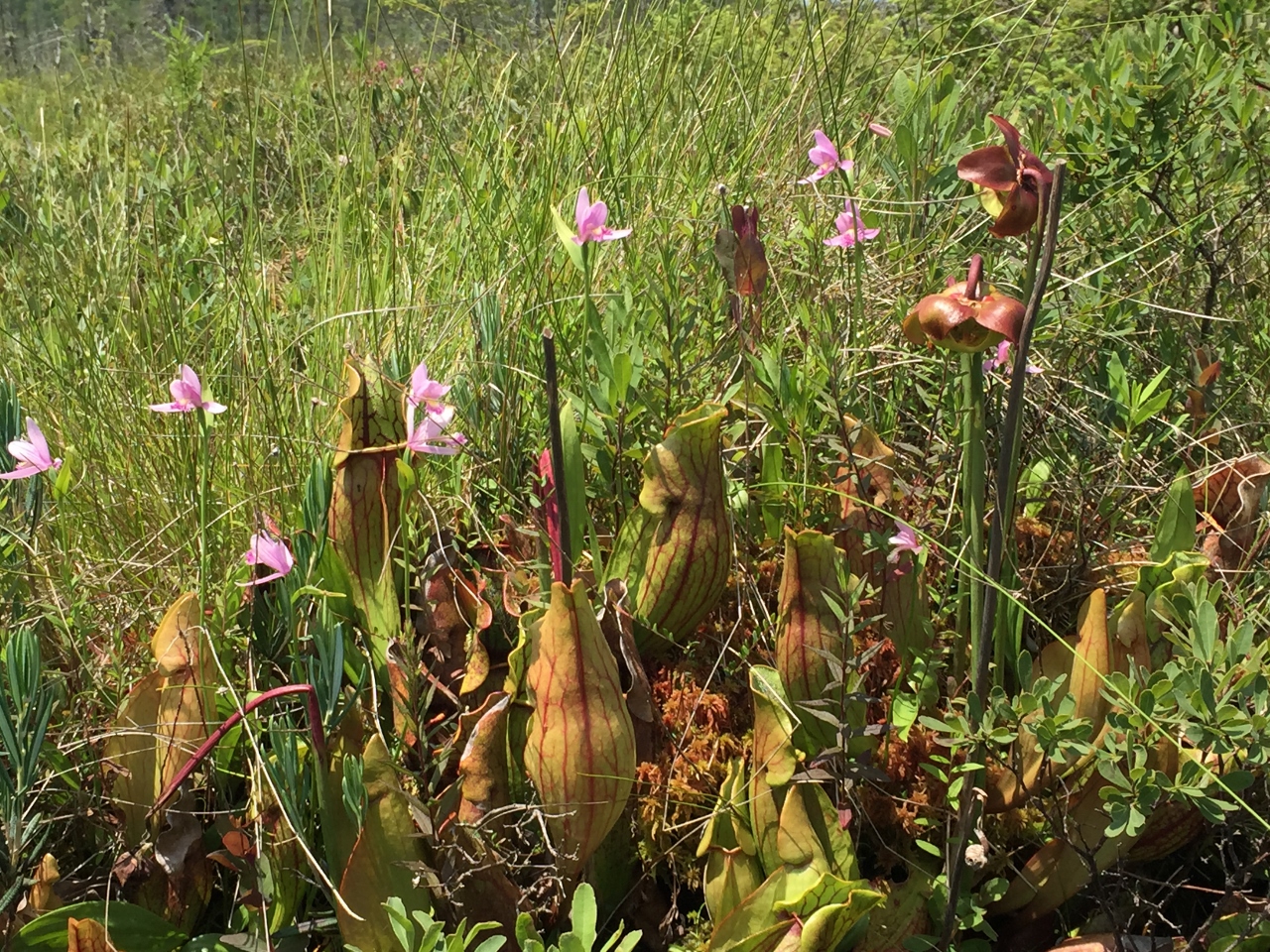
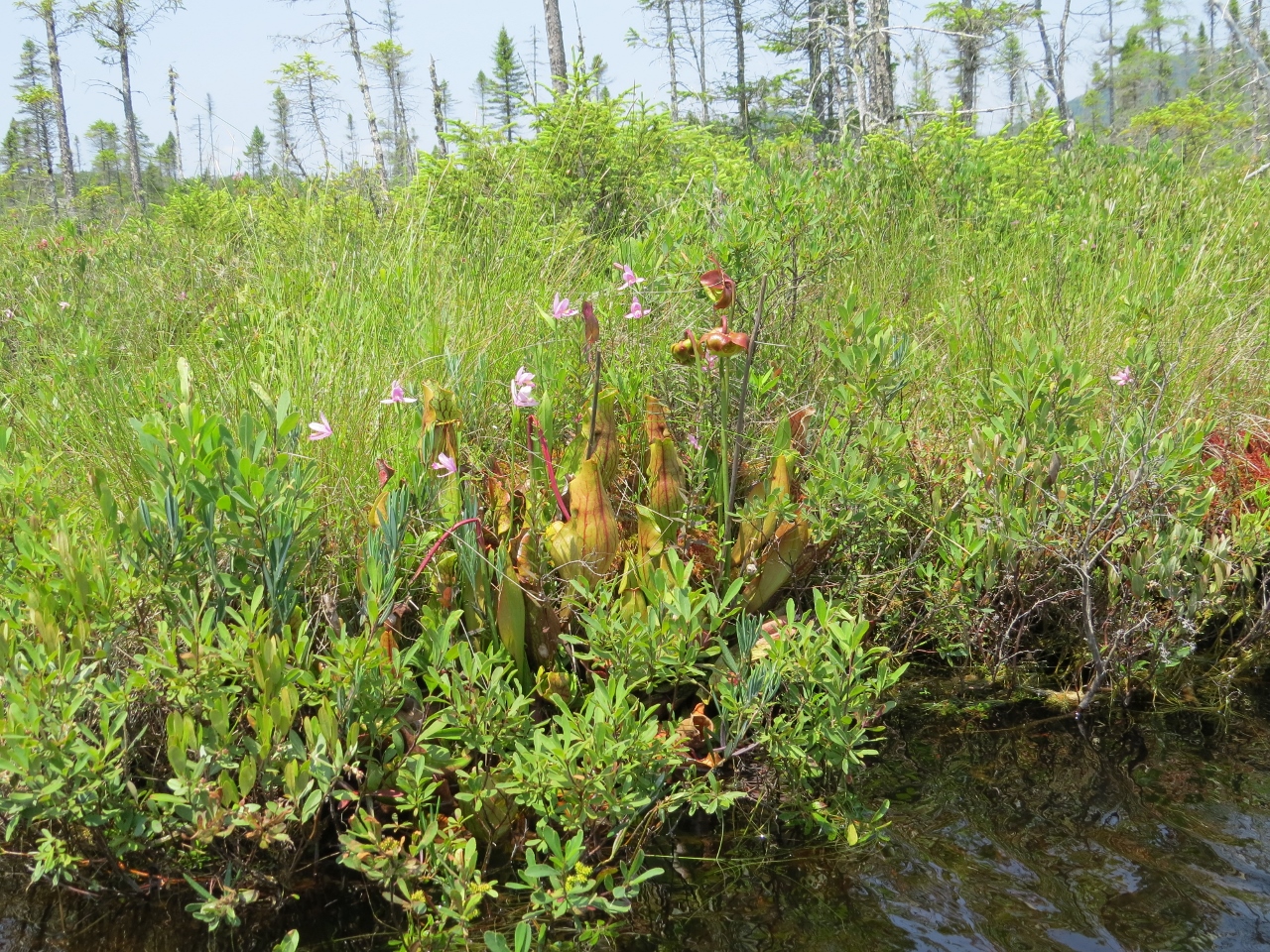
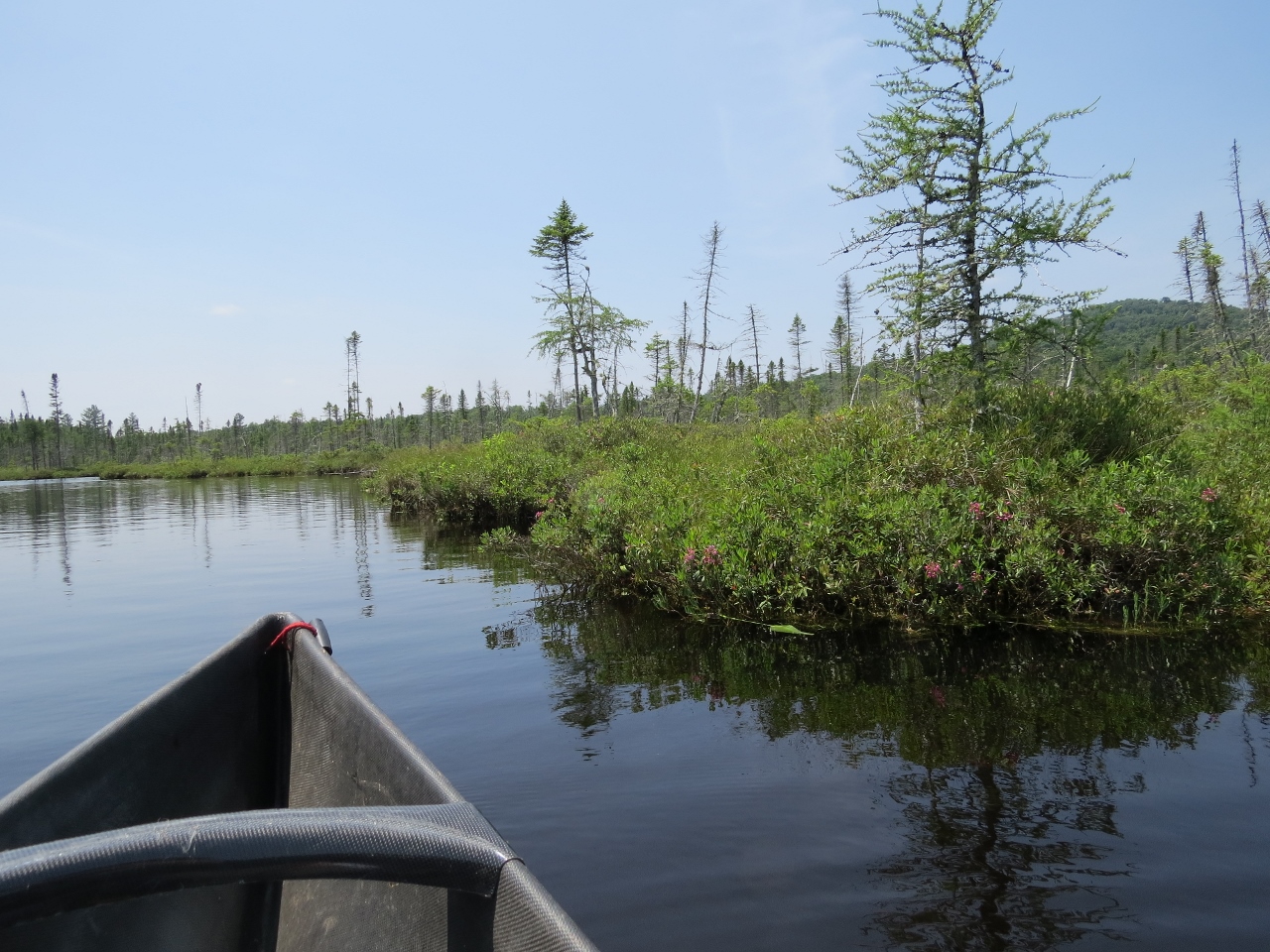
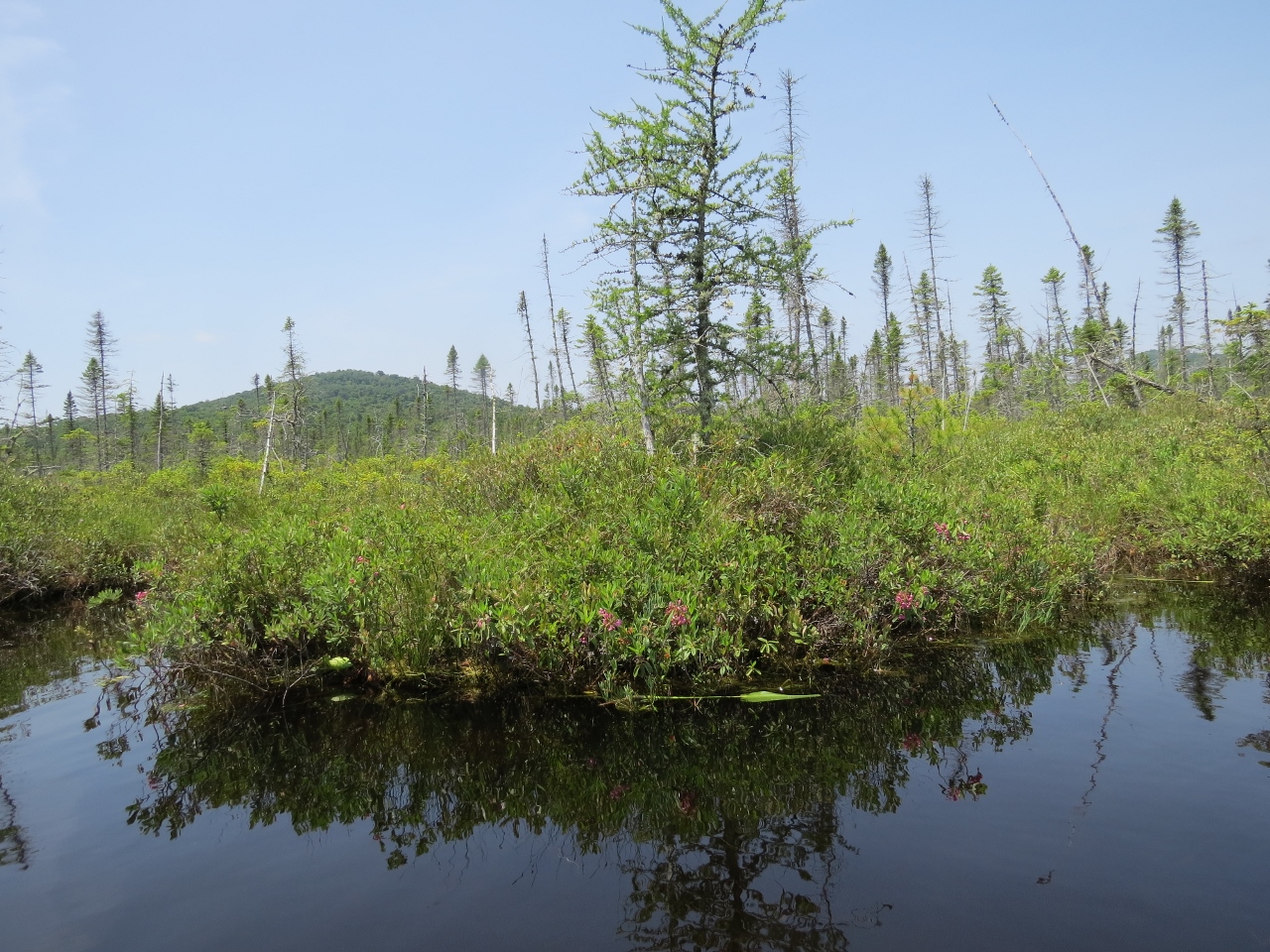
I continued on to the rocky outlet area where a Swainson's Thrush was singing.
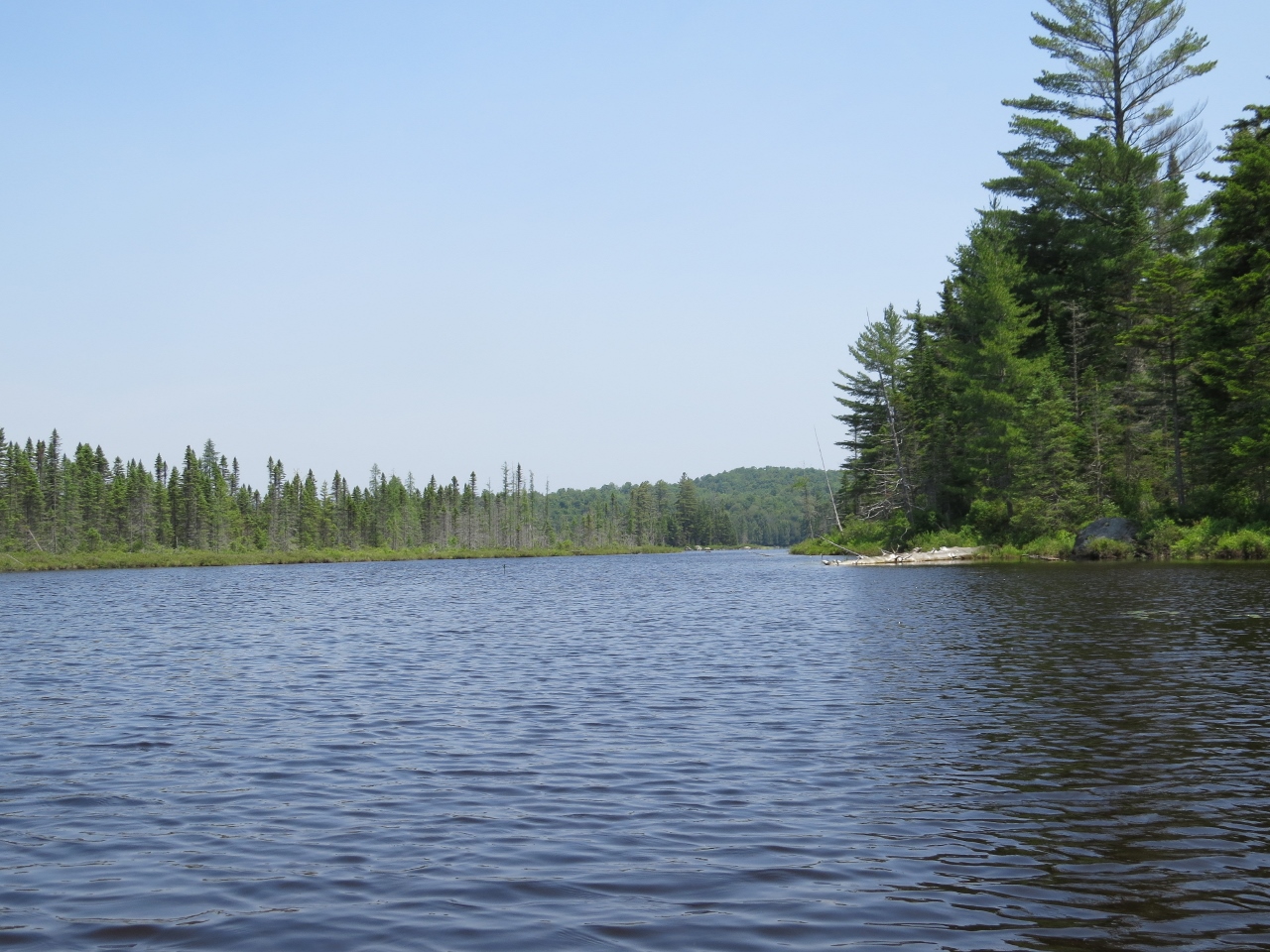
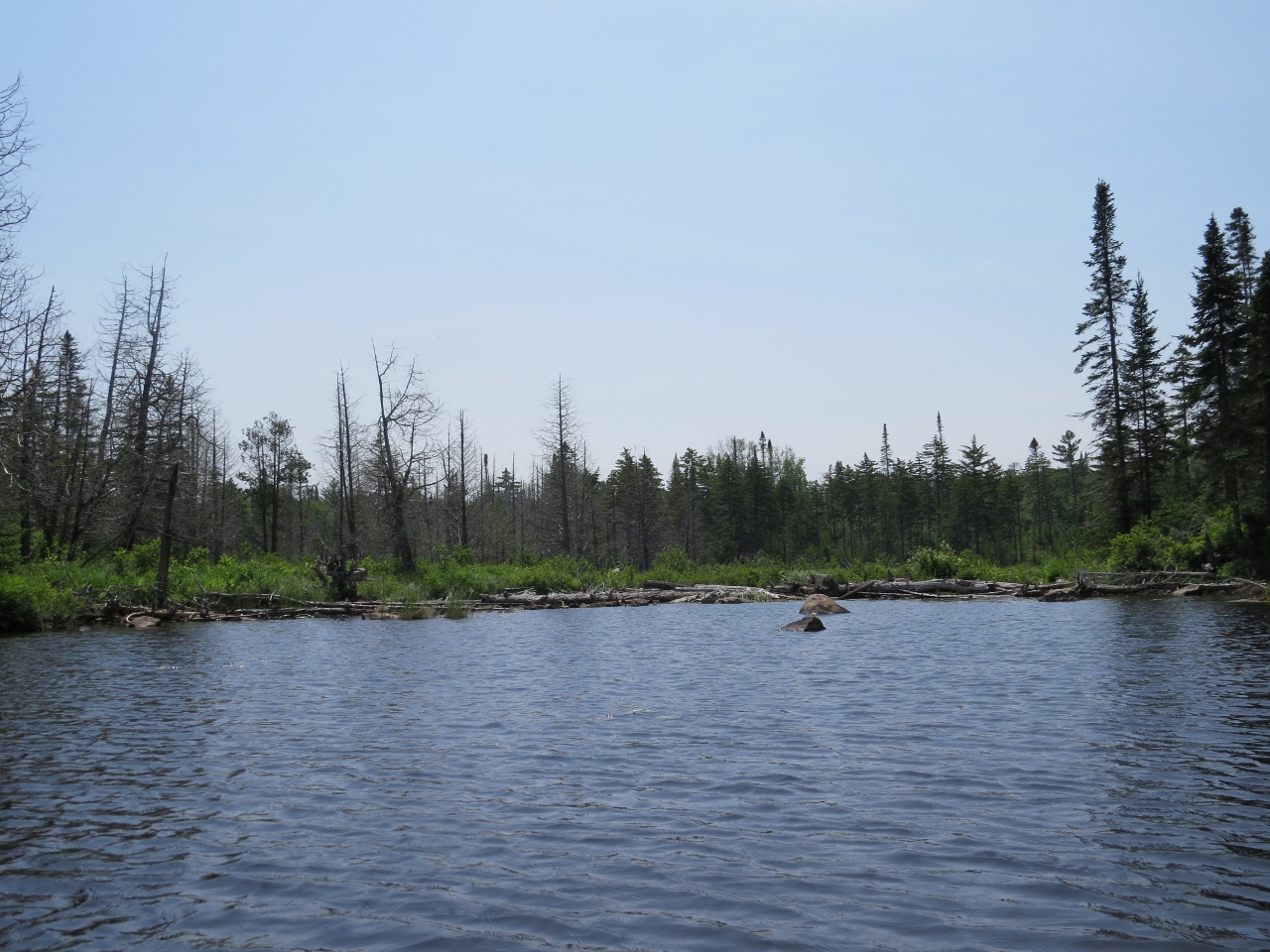
As I headed back across the pond the mountain views were beautiful. There is one island on the pond that I paddled around.
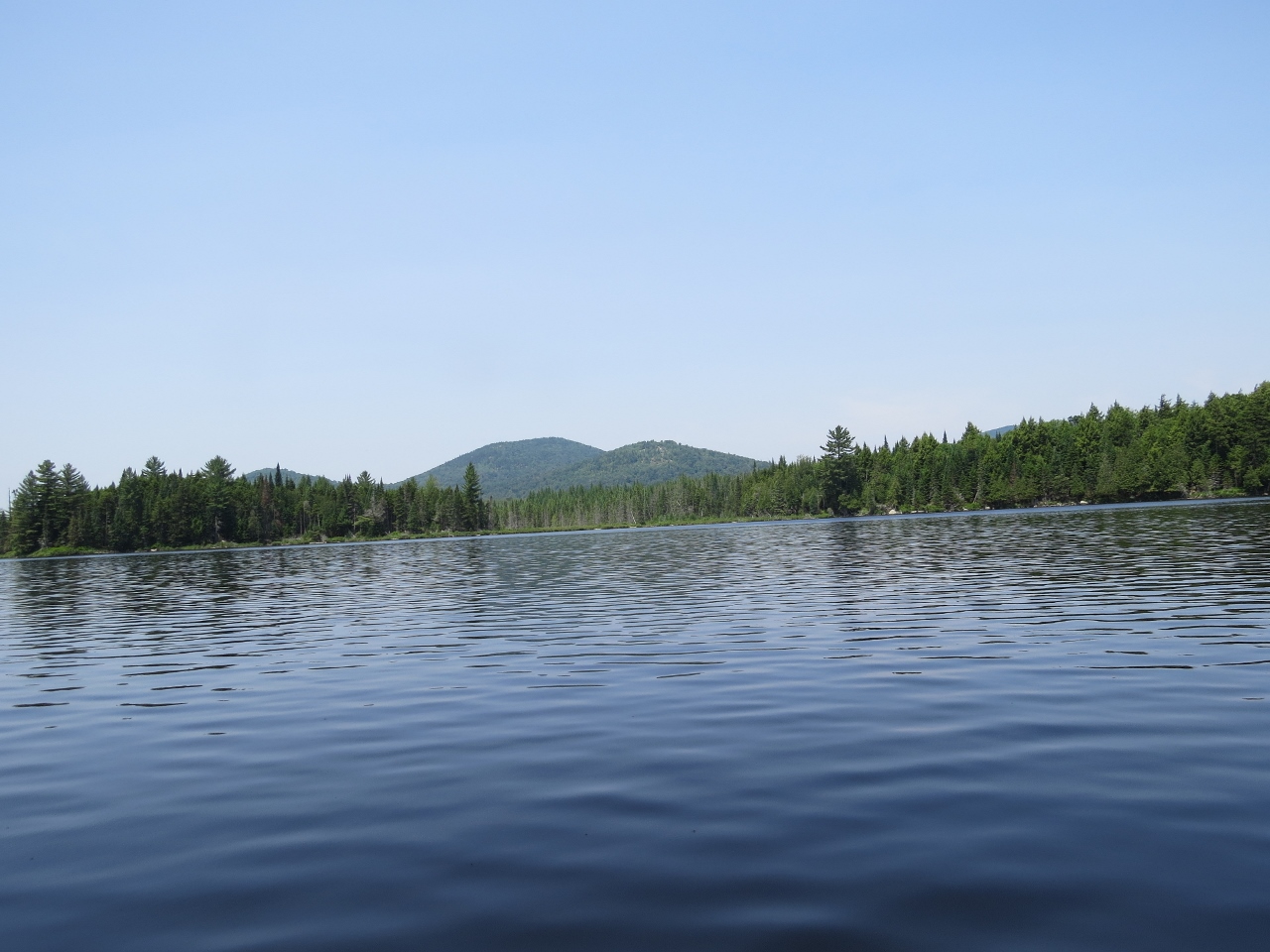
This year, there is an excellent cone crop on the White Cedar, Balsam Fir, and White, Red, and Black Spruce trees in the Adirondacks. Before I pulled my canoe out, I photographed the cones on the White Cedar trees at the edge of the pond. We will have plenty of food for irruptive winter finches this year!
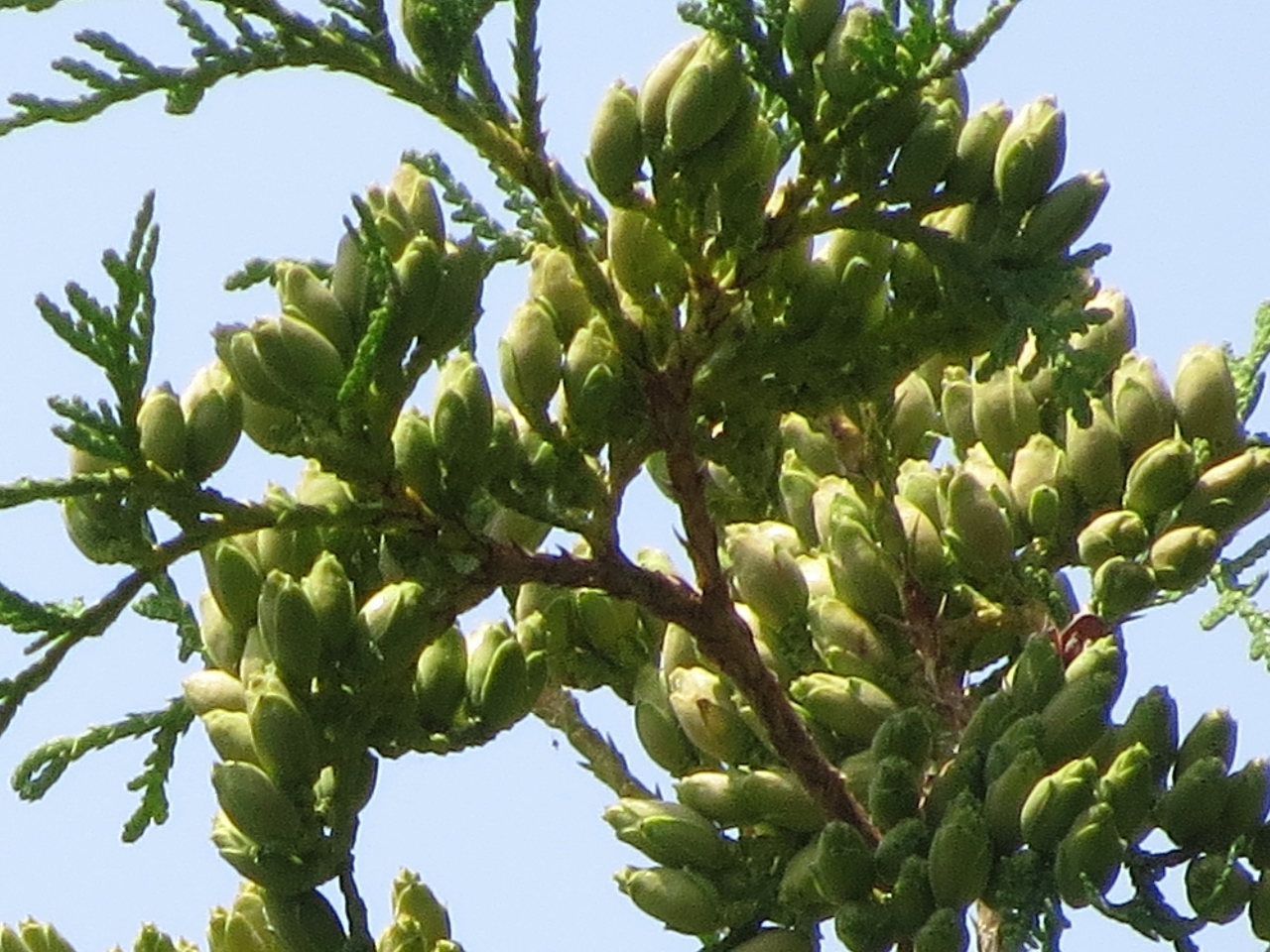
As I carried my canoe back along the dirt road, Black-throated Blue and Black-throated Green Warblers sang.
This fall, my husband and I plan to canoe Mud Pond, carry to McRorie Lake and camp at one of the designated locations along its shore. We will also climb Mud Pond Mountain. It is a scenic, seemingly undiscovered area in Long Lake, so I suspect we will have solitude!
Tips for mud pond visitors
If you would like to visit Cedarlands, take Kickerville Road off Route 30 in Long Lake for approximately two miles. At this point, the paved road becomes a dirt road. Continue on the dirt road for eight-tenths of a mile to the parking area on the left. Continue on foot for three-tenths of a mile to the three metal gates. Go around the left gate for access to Mud Pond, McRorie Lake, and hiking trails. Bicycles are also allowed on the dirt roads in the Cedarlands Conservation Easement lands.
If you do visit, there are many nice lodging and restaurant options in the area!






